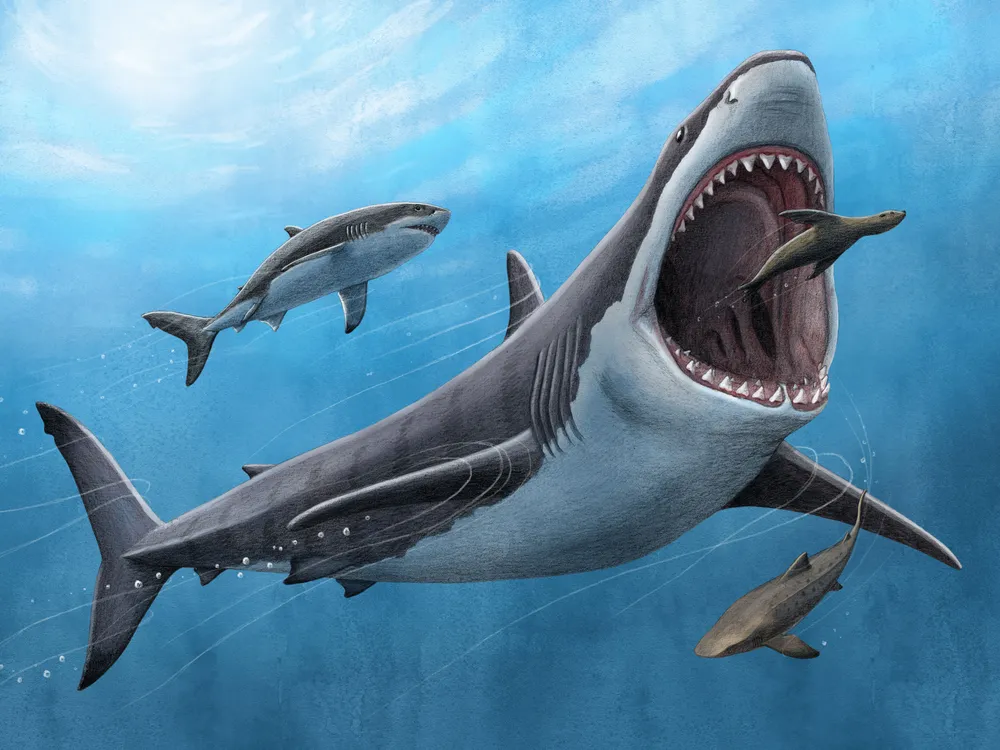
Unlocking the Mystery of Megalodon’s Extinction: Insights from Mark Tozer”
The Megalodon, a behemoth of the ancient seas, has long fascinated researchers and enthusiasts alike. For years, the question of why these colossal predators became extinct has remained a puzzle. In this blog, we explore the insights and beliefs of Mark Tozer regarding the extinction of the Megalodon, shedding light on the fascinating theories behind this prehistoric giant’s disappearance.
The Changing World of Megalodon:
Mark believes that a combination of environmental factors, prey availability, and competition played a significant role in the Megalodon’s extinction.
1. Changing Climate:
The Earth’s climate has been in a constant state of flux, and the Miocene and Pliocene epochs, when Megalodons thrived, were no exceptions. Mark Tozer suggests that shifts in ocean temperatures and circulation patterns might have impacted the Megalodon’s preferred hunting grounds and food sources. As the environment changed, these apex predators might have struggled to adapt.
2. Competition with New Predators:
Over time, the ocean’s ecosystem evolved, introducing new predators. Mark Tozer proposes that the Megalodon’s dominance may have been challenged by smaller, more agile competitors like the great white shark. Smaller predators may have been better equipped to adapt to a changing marine world and could have outcompeted the Megalodon for resources.
3. Decline in Megafauna:
The Megalodon’s primary diet consisted of large marine mammals, including prehistoric whales. Mark highlights that environmental changes, along with potential human hunting of these megafauna, could have led to a decrease in the availability of their preferred prey. A scarcity of food would have had dire consequences for the Megalodon population.
4. Vulnerability to Disease:
Just like any other species, Megalodons were susceptible to diseases and environmental stressors. Mark suggests that the changing environment could have introduced new pathogens or other factors that negatively impacted the health and reproductive capabilities of these creatures.
5. Reproductive Challenges:
Megalodons had relatively long gestation periods and likely gave birth to only a few offspring at a time. If environmental pressures affected their ability to reproduce successfully, it could have contributed to a declining population.
6. A Gradual Decline:
Mark emphasizes that the extinction of the Megalodon was likely not a sudden event but a gradual process. Over millions of years, various factors may have converged to diminish their numbers until they could no longer sustain their population.
While the exact cause of the Megalodon’s extinction remains a subject of debate, the insights and beliefs of experts remind us of the complex interplay of factors that shape the destiny of species on Earth. Understanding the extinction of these ancient giants is not only a window into the past but also a crucial reminder of the need to protect and preserve the diverse life that inhabits our oceans today.


Mystery typically refers to something that is unknown, puzzling, or difficult to understand. It can refer to various situations, events, or phenomena that challenge our ability to explain or comprehend them. Mysteries can be found in a wide range of contexts, including literature, movies, real-life events, and scientific phenomena.
In literature, a mystery often forms the central plot element of a story, where characters try to unravel or solve a complex problem or crime. Mystery novels, for example, are a popular genre where the resolution of a puzzle or enigma is a key element of the narrative.